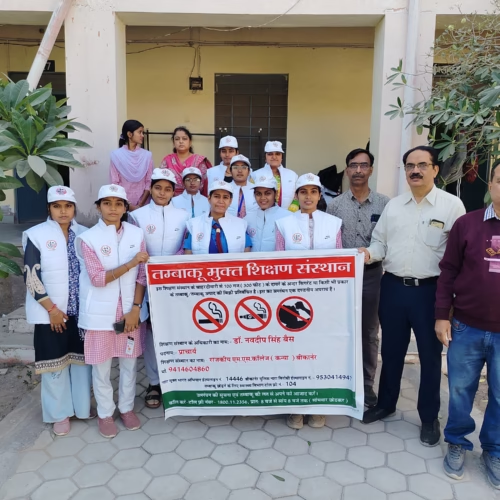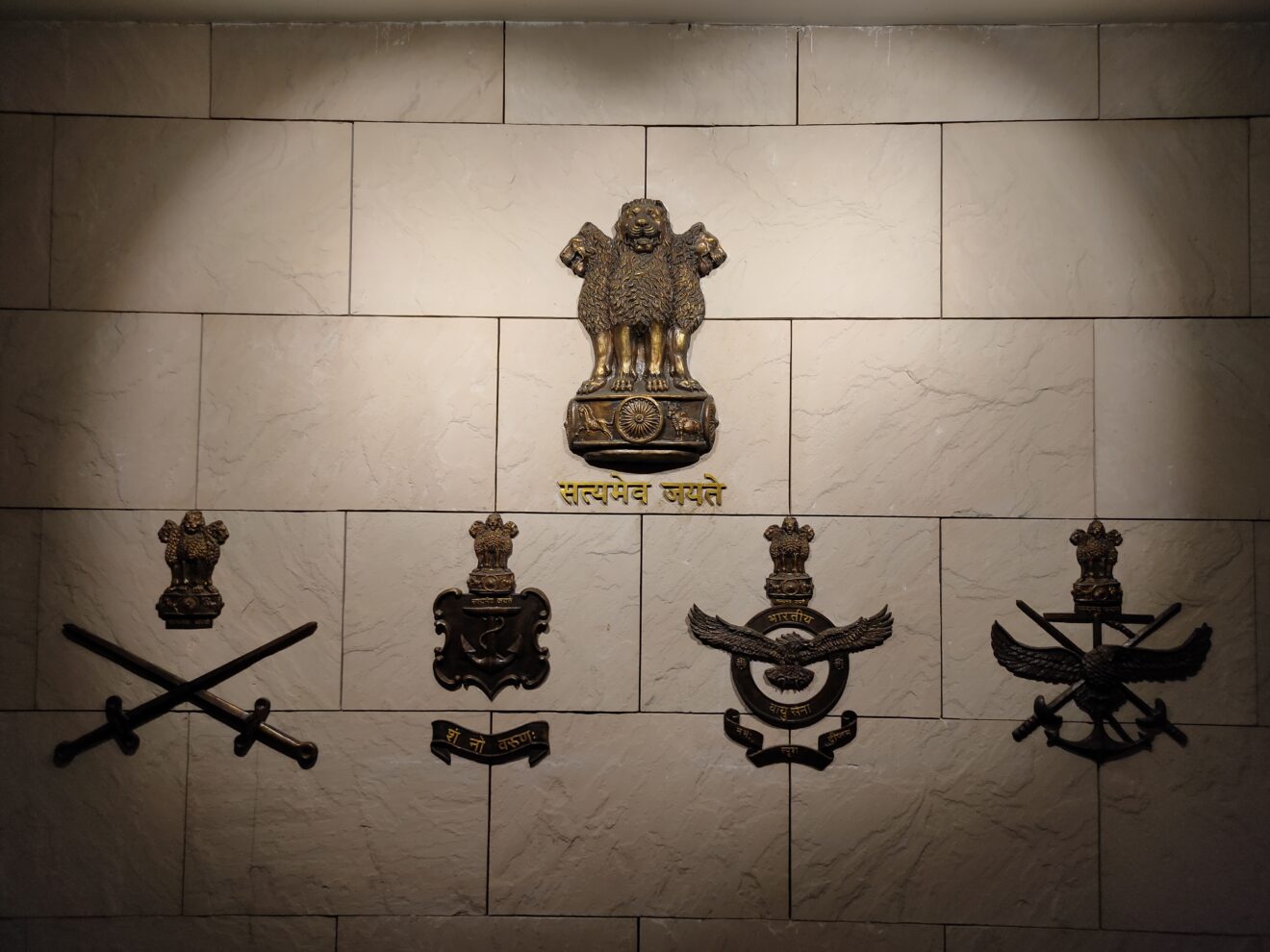BY DEFENCE JOURNALIST SAHIL | T.I.N. NETWORK
Operation Akhand Prahar: How RUDRA Brigade, Bhairav Battalions, and Drone-Powered ‘Ashni’ Units Are Redefining India’s Multi-Domain Warfare Doctrine
Jaisalmer, Rajasthan — Under the blazing desert sun of the Thar, a new chapter in India’s military transformation unfolded. The Indian Army’s Operation Akhand Prahar — the concluding phase of the 13-day-long Operation Trishul — showcased not just firepower, but the dawn of a new doctrine of warfare. It was an exercise that brought together over 30,000 troops of the Indian Army, Navy, and Air Force in one of the largest tri-services operations in recent years — symbolizing jointness, innovation, and Atmanirbharta at an unprecedented scale.
This was not merely a routine military drill. It was a decisive message — that India’s armed forces are entering an era of multi-domain warfare, where technology, precision, and integration define the battlefield more than numbers and conventional might.
At the heart of this transformation stands the newly formed RUDRA Brigade, the audacious Bhairav Battalions, and the tech-powered Ashni Drone Platoons — all operationally validated during Akhand Prahar under the Southern Command’s watchful leadership.
“Rudra Means Power — ‘Prachand’ is Its Manifestation”
Standing tall against the desert horizon, Lieutenant General Dhiraj Seth, General Officer Commanding-in-Chief, Southern Command, addressed the troops with conviction that echoed the Army’s confidence.
“The RUDRA Brigade is an integrated all-arms formation. It has been operationally validated during Operation Akhand Prahar. ‘Rudra’ means Mahadev — Lord Shiva — and another synonym is Prachand, meaning massive. This brigade has shown its capability through Prachand attacks, proving its readiness for future multi-domain operations,” he said.
The RUDRA Brigade represents the essence of modern military thinking — integration, technology, and lethality. Designed to execute operations involving infantry, armoured, mechanised infantry, artillery, and air defence units, it marks a paradigm shift from traditional combat divisions to modular, self-sustaining, rapid-deployment units.
Operation Trishul: The Theatre of Transformation
The Operation Trishul series, conducted close to the Indo-Pak border, culminated with Akhand Prahar — an intense, large-scale validation of tri-service coordination and indigenous capability. The exercise saw seamless collaboration between ground forces, fighter aircraft, and combat helicopters — including Jaguar deep-strike jets, Apache attack helicopters, ALH Dhruv, K-9 Vajra self-propelled howitzers, T-90 Bhishma tanks, and Infantry Combat Vehicles (ICVs).
The Indian Navy’s maritime surveillance elements also participated through satellite-enabled reconnaissance coordination, marking a historic convergence of land, air, and maritime capabilities in real-time.
The emphasis was clear — Atmanirbhar Bharat (Self-Reliant India) is not a slogan but a lived battlefield reality.
From drone swarms and robotic scouts to AI-enabled fire control systems, indigenous systems took centre stage.
Bhairav Battalions: India’s Shock and Strike Specialists
Emerging from the sands of Rajasthan are India’s newest warriors — the Bhairav Battalions. Conceived as hybrid formations bridging the gap between regular infantry and elite special forces, these battalions bring together soldiers from Infantry, Artillery, Air Defence, Engineers, and Signals, forming a single, multi-skilled combat entity.
The first five Bhairav Battalions were raised and deployed on October 31, with plans to raise 20 more in the coming months, totalling 25 across India’s borders.
“The Bhairav Battalion, part of the 12 Corps, was formed just four months ago and has already proven its operational capability during Akhand Prahar,” Lt Gen Dhiraj Seth said, praising the formation’s agility and precision.
Each Bhairav Battalion, comprising about 250 personnel, is trained for surprise raids, deep insertion, sabotage, and cross-border disruption missions. They are smaller than a traditional infantry battalion but significantly more lethal — equipped with high-mobility vehicles, drones, loitering munitions, anti-tank missiles, mortars, and electronic warfare gear.
Training modules are conducted at India’s premier institutions like the High Altitude Warfare School (HAWS) and Counter-Insurgency and Jungle Warfare School (CIJWS), ensuring that these soldiers are equally effective in mountains, deserts, and urban environments.
Ashni Platoons: Drones Become Infantry’s New Weapon
If Bhairav Battalions are the claws, the Ashni Platoons are the eyes — and the brain.
Born out of lessons from Operation Sindoor, where hostile drones exposed vulnerabilities in airspace management, the Army initiated the Ashni Project to ensure “Eagle on Every Arm” — a philosophy that every infantry battalion should have its own integrated drone capability.
Each Ashni Platoon comprises 20–25 specially trained drone operators within the infantry. They control both surveillance UAVs and loitering munitions (kamikaze drones), allowing them to strike enemy positions directly without external support.
Previously, drone operators functioned as attached support. Now, they are integral to the battalion’s structure — conducting target acquisition, electronic warfare, tactical surveillance, and precision strikes in real time.
The Southern Command has also developed its own Drone Hubs, creating a robust, indigenous ecosystem for design, testing, and deployment. The drones used in Operation Trishul were produced and field-tested within these hubs — a direct manifestation of Atmanirbhar Bharat on the battlefield.
Counter-UAS Grid: Defending India’s Skies
Recognising that drones will dominate future conflicts, the Indian Army is establishing a Counter-Unmanned Aerial System (C-UAS) Grid — a nationwide sensor and radar network designed to detect, track, and neutralize enemy drones.
This grid will use artificial intelligence, automated decision-support systems, and real-time visualization to provide commanders a complete operational picture of the airspace.
The Army has approved the indigenous ‘Saksham’ system, developed by Bharat Electronics Limited (BEL), to secure airspace up to 10,000 feet. It will integrate both own and enemy UAV data through a secure military network, enabling automated threat prioritization and engagement.
The C-UAS project has been fast-tracked, with deployment across all forward formations targeted within a year — a direct response to lessons learned from Operation Sindoor, where swift detection and neutralization of drones were crucial.
JAI Doctrine in Motion: Jointness, Atmanirbharta, Innovation
Lt Gen Dhiraj Seth’s command philosophy — JAI (Jointness, Atmanirbharta, Innovation) — was at the heart of Operation Akhand Prahar.
It represents the Southern Command’s strategic vision: to modernize, integrate, and innovate simultaneously.
“The RUDRA Brigade and Bhairav Battalions are symbols of a self-reliant India’s new combat philosophy. Our soldiers from Rajasthan understand this land and blend seamlessly into it, creating remarkable operational outcomes. This exercise has proven that the Indian Army can deliver multi-domain effects with precision and speed,” the Army Commander said during the closing address in Jaisalmer.
Technology, Terrain, and Transformation: The New Indian Army
In the vastness of the Thar Desert — where the horizon seems endless and the sands hold the echoes of 1971 — India’s new generation of soldiers demonstrated how warfare has evolved.
- Drones replaced scouts.
- AI replaced static command posts.
- Tri-service integration replaced isolated maneuvers.
- Atmanirbhar systems replaced imports.
From Rudra’s Prachand Attacks to Bhairav’s rapid strikes, and Ashni’s eyes in the sky, the Indian Army is no longer reacting to modern warfare — it is defining it.
A Message Beyond the Desert
Operation Akhand Prahar was not only an exercise of might but a strategic signal — both to adversaries and allies — that India’s armed forces are combat-ready across domains: land, air, cyber, and electronic.
The Southern Command’s successful orchestration of the exercise underscores India’s military readiness to respond swiftly to emerging threats, whether from traditional adversaries or asymmetric challenges.
Conclusion: The Rudra Rises
The RUDRA Brigade’s validation marks the arrival of a new Indian Army — agile, networked, and indigenously powered.
The Bhairav Battalions represent audacity.
The Ashni Platoons represent innovation.
The Saksham Grid represents foresight.
Together, they form the cornerstone of India’s future warfare — the Akhand Prahar doctrine.
As Lieutenant General Dhiraj Seth concluded:
“Our soldiers are the sons of this soil. They know every grain of this desert and every challenge of this terrain. With modern weapons, new formations, and indomitable spirit, they have shown that the future of warfare belongs to those who innovate — and the Indian Army is leading that future.”
From the sands of Jaisalmer, the message resounded loud and clear — India’s might is ‘Rudra’… and its strike is ‘Prachand’.
BY DEFENCE JOURNALIST SAHIL | T.I.N. NETWORK
ऑपरेशन अखंड प्रहार: रुद्र ब्रिगेड, भैरव बटालियन और ड्रोन-समर्थ ‘अशनि’ इकाइयों ने परिभाषित किया भारत का नया मल्टी-डोमेन वारफेयर सिद्धांत
जैसलमेर, राजस्थान — तपते थार के रेगिस्तान में भारतीय सेना के इतिहास का एक नया अध्याय लिखा गया।
13 दिवसीय संयुक्त युद्धाभ्यास ‘ऑपरेशन त्रिशूल’ के अंतिम अध्याय ‘ऑपरेशन अखंड प्रहार’ ने न केवल शक्ति और मारक क्षमता का प्रदर्शन किया बल्कि यह दिखाया कि भारत की सेनाएं अब पारंपरिक युद्ध से आगे बढ़ चुकी हैं।
अब युद्ध का नया युग है — मल्टी-डोमेन वॉरफेयर (बहु-क्षेत्रीय युद्ध) — जहां तकनीक, एकीकरण, और सटीकता तय करेंगे जीत की दिशा।
इस ऐतिहासिक अभ्यास में भारतीय थलसेना, नौसेना और वायुसेना के 30,000 से अधिक जवानों ने भाग लिया — और तीनों सेनाओं के बीच समन्वय, ‘आत्मनिर्भर भारत’ और नवाचार की भावना को एकजुट कर दिखाया कि भारतीय सेना भविष्य के किसी भी युद्ध के लिए तैयार है।
इस युद्धाभ्यास का केंद्र था — नई गठित रुद्र ब्रिगेड, साहसी भैरव बटालियन, और तकनीक से सुसज्जित अशनि ड्रोन प्लाटून — जिन्हें ‘अखंड प्रहार’ के दौरान पूर्णतः ऑपरेशनल रूप से वैध किया गया।
“रुद्र शक्ति का प्रतीक है, ‘प्रचंड’ उसका रूप”
थार की रेत पर जब धूल के बीच टैंकों की गर्जना और हेलीकॉप्टरों की उड़ान गूंज रही थी, तब दक्षिण कमान के जनरल ऑफिसर कमांडिंग-इन-चीफ लेफ्टिनेंट जनरल धीरज सेठ ने सैनिकों को संबोधित करते हुए कहा —
“रुद्र ब्रिगेड एक इंटीग्रेटेड ऑल-आर्म्स फॉर्मेशन है, जिसे ‘ऑपरेशन अखंड प्रहार’ के दौरान ऑपरेशनल रूप से वैध किया गया। ‘रुद्र’ महादेव का रूप है, जबकि ‘प्रचंड’ उसका विस्तार है। इस ब्रिगेड ने ‘प्रचंड’ हमलों के जरिए यह साबित किया है कि भारतीय सेना भविष्य के बहु-क्षेत्रीय युद्ध के लिए पूरी तरह सक्षम और तैयार है।”
रुद्र ब्रिगेड भारतीय थलसेना की नई सैन्य सोच का प्रतिबिंब है — एकीकरण, तकनीक और घातक क्षमता।
यह ऐसी फॉर्मेशन है जो इन्फेंट्री, आर्मर्ड, मैकेनाइज्ड इन्फेंट्री, आर्टिलरी और एयर डिफेंस जैसी सभी शाखाओं को एक ही संरचना में जोड़ती है।
यह पारंपरिक डिवीजनों से आगे बढ़कर तेज-प्रतिक्रिया वाली मॉड्यूलर फॉर्मेशन है, जो आत्मनिर्भर, लचीली और सटीक कार्रवाई करने में सक्षम है।
ऑपरेशन त्रिशूल: परिवर्तन का मंच
ऑपरेशन त्रिशूल, जो भारत-पाक सीमा के समीप आयोजित हुआ, अपने चरम बिंदु ‘अखंड प्रहार’ पर पहुंचा — जिसमें त्रि-सेवा समन्वय, आत्मनिर्भर हथियार प्रणालियों और आधुनिक युद्धक अवधारणाओं का परीक्षण हुआ।
इसमें शामिल रहे — जगुआर फाइटर जेट्स, अपाचे अटैक हेलीकॉप्टर, ALH ध्रुव, K-9 वज्र तोपें, T-90 भीष्म टैंक, और ICV वाहन — जिन्होंने थार के रेगिस्तान को वास्तविक युद्धक्षेत्र में बदल दिया।
भारतीय नौसेना ने भी इस अभ्यास में उपग्रह आधारित निगरानी और सूचना-साझा प्रणाली के जरिए महत्वपूर्ण भूमिका निभाई — जिससे भूमि, वायु और समुद्र तीनों क्षेत्रों में रीयल-टाइम समन्वय संभव हुआ।
अभ्यास का मुख्य उद्देश्य स्पष्ट था — आत्मनिर्भर भारत कोई नारा नहीं, बल्कि युद्धभूमि की हकीकत है।
ड्रोन स्वार्म, रोबोटिक स्काउट्स, AI-आधारित फायर कंट्रोल सिस्टम और स्वदेशी संचार नेटवर्क — सब कुछ ‘मेड इन इंडिया’।
भैरव बटालियन: भारत के नए ‘शॉक एंड स्ट्राइक’ योद्धा
थार की रेत से उभरकर आई भारतीय सेना की नई पहचान — भैरव बटालियन।
ये बटालियन पारंपरिक इन्फेंट्री और विशेष बलों (Special Forces) के बीच की कड़ी हैं — जो इन्फेंट्री, आर्टिलरी, एयर डिफेंस, इंजीनियर्स और सिग्नल्स शाखाओं के सैनिकों को एकीकृत रूप में साथ लाती हैं।
पहली पाँच भैरव बटालियनें 31 अक्टूबर को गठित और तैनात की गईं, जबकि अगले कुछ महीनों में 20 और ऐसी बटालियनें तैयार की जाएंगी। कुल 25 भैरव बटालियनें देश की सीमाओं पर तैनात होंगी।
“12 कोर की भैरव बटालियन, जो केवल चार माह पहले गठित की गई थी, ने ‘अखंड प्रहार’ के दौरान अपनी ऑपरेशनल क्षमता साबित की है,” ले. जनरल धीरज सेठ ने कहा।
हर भैरव बटालियन में लगभग 250 सैनिक होते हैं, जो तेज हमले, गुप्त घुसपैठ, सबोटाज और सीमा-पार मिशनों के लिए प्रशिक्षित हैं।
इन्हें हाई मोबिलिटी व्हीकल, ड्रोन, लूटरिंग म्यूनिशन्स, एंटी-टैंक मिसाइल, मोर्टार, मशीन गन और इलेक्ट्रॉनिक वॉरफेयर सिस्टम से लैस किया गया है।
इन सैनिकों को हाई एल्टीट्यूड वॉरफेयर स्कूल (HAWS) और काउंटर-इंसर्जेंसी एंड जंगल वॉरफेयर स्कूल (CIJWS) जैसे प्रतिष्ठित संस्थानों में विशेष प्रशिक्षण दिया जाता है — जिससे ये किसी भी भू-भाग, चाहे पहाड़ हो या रेगिस्तान, में तैनाती के लिए तैयार रहते हैं।
अशनि प्लाटून: अब ड्रोन बने इन्फेंट्री का नया हथियार
यदि भैरव बटालियन सेना की तलवार हैं, तो अशनि प्लाटून उसकी आंखें और मस्तिष्क हैं।
ऑपरेशन सिंदूर के दौरान दुश्मन ड्रोन गतिविधियों से मिली सीख के बाद सेना ने ‘अशनि प्रोजेक्ट’ शुरू किया — जिसका मंत्र है “Eagle on Every Arm” (हर बाजू पर एक बाज़)।
प्रत्येक इन्फेंट्री बटालियन में अब अशनि प्लाटून होगी — जिसमें 20 से 25 विशेष रूप से प्रशिक्षित ड्रोन ऑपरेटर होंगे।
ये सैनिक न केवल निगरानी ड्रोन (Surveillance UAVs) बल्कि लूटरिंग म्यूनिशन या ‘कामिकाजे ड्रोन’ भी संचालित करते हैं, जिससे वे दुश्मन पर सटीक और त्वरित प्रहार कर सकें।
पहले ड्रोन यूनिट्स केवल सपोर्ट के रूप में जुड़े रहते थे, अब वे इन्फेंट्री का स्थायी हिस्सा बन गए हैं।
अशनि यूनिट्स इलेक्ट्रॉनिक वॉरफेयर, टारगेट एक्विजिशन, बैटलफील्ड सर्विलांस और प्रिसीजन स्ट्राइक जैसी क्षमताओं से लैस हैं।
दक्षिण कमान ने अपने स्तर पर ड्रोन हब्स विकसित किए हैं, जहां डिजाइन, उत्पादन और परीक्षण सब कुछ सेना के भीतर हो रहा है।
ऑपरेशन त्रिशूल के दौरान जिन ड्रोन का इस्तेमाल हुआ, वे इन्हीं स्वदेशी हब्स से निर्मित और फील्ड-टेस्टेड थे — यह आत्मनिर्भरता का वास्तविक प्रदर्शन था।
काउंटर-UAS ग्रिड: दुश्मन ड्रोन के खिलाफ आसमान की सुरक्षा
भविष्य के युद्धों में ड्रोन सबसे बड़ा खतरा होंगे — इस तथ्य को ध्यान में रखते हुए सेना ने काउंटर-अनमैन्ड एरियल सिस्टम (C-UAS) ग्रिड की शुरुआत की है।
यह एक ऑल-इंडिया सेंसर और रडार नेटवर्क होगा, जो दुश्मन ड्रोन को पहचानने, ट्रैक करने और निष्क्रिय करने में सक्षम होगा।
यह ग्रिड आर्टिफिशियल इंटेलिजेंस और रीयल-टाइम डेटा प्रोसेसिंग का उपयोग करेगा, ताकि कमांडर को युद्धक्षेत्र का पूरा हवाई चित्र (air picture) मिल सके।
इसमें शामिल है ‘सक्षम’ प्रणाली, जिसे भारत इलेक्ट्रॉनिक्स लिमिटेड (BEL) ने विकसित किया है, और जो 10,000 फीट की ऊंचाई तक के हवाई क्षेत्र को सुरक्षित करेगी।
‘सक्षम’ सिस्टम सेना के सुरक्षित डेटा नेटवर्क से जुड़ा रहेगा और स्वचालित खतरा मूल्यांकन और प्रतिक्रिया की सुविधा देगा।
इस परियोजना को फास्ट ट्रैक प्रोकीउरमेंट (FTP) के तहत स्वीकृति दी गई है ताकि अगले एक वर्ष में इसे सभी अग्रिम फॉर्मेशनों में लागू किया जा सके।
JAI सिद्धांत: Jointness, Atmanirbharta, Innovation का युद्धक्षेत्र पर संगम
ले. जनरल धीरज सेठ की कमान नीति JAI (Jointness, Atmanirbharta, Innovation) पर आधारित है — और ऑपरेशन अखंड प्रहार इसका जीवंत उदाहरण बना।
“रुद्र ब्रिगेड और भैरव बटालियन आत्मनिर्भर भारत की नई युद्धदर्शन की मिसाल हैं। राजस्थान के हमारे सैनिक इस भूमि को अपनी हथेली की तरह जानते हैं, और इसी से वे अद्भुत परिणाम देते हैं। इस अभ्यास ने दिखाया कि भारतीय सेना बहु-क्षेत्रीय युद्ध में सटीकता और तीव्रता दोनों के साथ कार्य करने में सक्षम है,” उन्होंने कहा।
तकनीक, धरातल और परिवर्तन: नया भारतीय सैनिक
थार की वही धरती, जिसने 1971 में इतिहास रचा था, अब भारत के सैन्य भविष्य की प्रयोगशाला बन चुकी है।
यहां —
- ड्रोन ने स्काउट की जगह ले ली,
- AI ने कमांड पोस्ट संभाले,
- त्रि-सेवा समन्वय ने पारंपरिक सीमाएं तोड़ीं,
- और स्वदेशी हथियारों ने आयातित प्रणालियों को प्रतिस्थापित किया।
रुद्र की ‘प्रचंड’ कार्रवाइयां, भैरव की तीव्र घुसपैठ और अशनि की हवाई निगरानी — यह सब भारत की उस नई सेना का प्रतीक है जो युद्ध के बदलते स्वरूप को केवल समझ नहीं रही, बल्कि उसे गढ़ रही है।
रेगिस्तान से उठा संदेश: भारत तैयार है
ऑपरेशन अखंड प्रहार केवल एक अभ्यास नहीं, बल्कि एक रणनीतिक संदेश था — कि भारत की सशस्त्र सेनाएं अब हर क्षेत्र में — भूमि, वायु, समुद्र, साइबर और इलेक्ट्रॉनिक डोमेन — युद्ध लड़ने के लिए तैयार हैं।
दक्षिण कमान द्वारा संचालित इस ऑपरेशन ने यह स्पष्ट किया कि भारत की सैन्य तैयारी अब तेज, एकीकृत और आत्मनिर्भर है।
चाहे पारंपरिक प्रतिद्वंदी हों या असममित खतरे — भारतीय सेना किसी भी स्थिति में निर्णायक प्रतिक्रिया देने की क्षमता रखती है।
निष्कर्ष: रुद्र का उदय
रुद्र ब्रिगेड का ऑपरेशनल वैधीकरण भारतीय सेना के उस नए युग का प्रतीक है, जो चुस्ती, नेटवर्किंग और स्वदेशी सामर्थ्य पर आधारित है।
भैरव बटालियन साहस का प्रतीक हैं।
अशनि प्लाटून नवाचार की पहचान हैं।
और ‘सक्षम’ प्रणाली दूरदृष्टि की मिसाल।
ये सभी मिलकर भारत की भविष्य की युद्ध-तैयारी का मूल स्तंभ हैं — ‘अखंड प्रहार सिद्धांत’ (Akhand Prahar Doctrine)।
लेफ्टिनेंट जनरल धीरज सेठ के शब्दों में —
“हमारे सैनिक इस भूमि के बेटे हैं। वे इस रेत के हर कण और हर चुनौती को जानते हैं। आधुनिक हथियारों, नई संरचनाओं और अदम्य आत्मा के साथ उन्होंने साबित किया है कि युद्ध का भविष्य उन्हीं का है जो नवाचार करते हैं — और भारतीय सेना उस भविष्य का नेतृत्व कर रही है।”
थार की रेत से उठी एक आवाज अब पूरे राष्ट्र में गूंज रही है —
भारत की शक्ति ‘रुद्र’ है, और उसका प्रहार ‘प्रचंड’।

















Add Comment